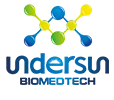What is Anthocyanin
Anthocyanin refers to a red-purple-blue flavonoid pigment found in plants. It is a water-soluble molecule. Its basic core structure is a flavylium ion. It can be found in the outer layer of plants structures such as fruits, flowers, leaves, stems, and roots. Cyanidin is the major anthocyanin found in plants. Peonidin, delphinidin, petunidin, pelargonidin, and malvidin are some examples of anthocyanin. Grape, acai, blueberry, bilberry, blackcurrant, cherry, and purple corn are the fruits that contain a higher amount of anthocyanin. Grapes are shown in figure 1.
The color and the stability of the pigment are influenced by the pH, temperature, and light. Anthocyanin is a powerful antioxidant that protects plants from UV. Due to the antioxidant effect, anthocyanin is used in pharmaceuticals that affect cardiovascular health, anti-cancer activity, and anti-inflammatory properties. In acidic conditions, anthocyanin appears as red, and it becomes blue in basic conditions.

What is Anthocyanidin
Anthocyanidin refers to a plant pigment formed by the hydrolysis of anthocyanin and characterized by the same flavonoid structure as anthocyanin without the ketone groups. Hence, it is the aglycone form of anthocyanin. 31 monomeric anthocyanidins have been identified so far and most of them are based on cyanidin. Others are based on delphinidin and pelargonidin. The basic core structure of anthocyanidin is shown in figure 2.
The color of anthocyanidin is present in the acidic conditions, and it is colorless in basic conditions. Since anthocyanidin is an antioxidant, it is also used as a pharmaceutical component. Both anthocyanin and anthocyanidin are used as natural dyes in food industry under E numbers. Both compounds contain antimicrobial activity, and they improve visual and neurological health.
Similarities Between Anthocyanin and Anthocyanidin
Anthocyanin and anthocyanidin are two types of red-blue plant pigments.
Both anthocyanin and anthocyanidin can be found in fruits, flowers, leaves, stems, and roots of higher plants.
Both anthocyanin and anthocyanidin are flavonoids.
The basic core of both anthocyanin and anthocyanidin is the flavylium
Both anthocyanin and anthocyanidin depend upon the pH.
Both anthocyanin and anthocyanidin are composed of antioxidant properties.
Both anthocyanin and anthocyanidin are used as food colorants and pharmaceutical components.
Difference Between Anthocyanin and Anthocyanidin
Definition
Anthocyanin: Anthocyanin refers to a red-blue flavonoid pigment found in plants.
Anthocyanidin: Anthocyanidin refers to a plant pigment formed by hydrolysis of anthocyanin.
Glycosylation
Anthocyanin: Anthocyanin is the glycosylated derivative.
Anthocyanidin: Anthocyanidin is the aglycones of the anthocyanin.
Effect of pH
Anthocyanin: Anthocyanin appears in red color in acidic pH and in blue in basic pH.
Anthocyanidin: The color of anthocyanidin is present in acidic conditions and it is colorless in basic conditions.
Conclusion
Anthocyanin and anthocyanidin are two types of red-blue pigments found in plants. The basic core of both anthocyanin and anthocyanidin is the flavylium ion. Anthocyanin is the glycosylated form of anthocyanidin. Anthocyanidin is composed of aglycons. The main difference between anthocyanin and anthocyanidin is the degree of glycosylation.

Does spinach contain anthocyanin?
Spinach (Spinacia oleracea L.) is widely cultivated as an economically important green leafy vegetable crop for fresh and processing consumption. The red-purple spinach shows abundant anthocyanin accumulation in the leaf and leaf petiole. However, the molecular mechanisms of anthocyanin synthesis in this species are still undetermined. In the present study, we investigated pigment formation and identified anthocyanin biosynthetic genes in spinach.
Does watermelon contain anthocyanin?
The total anthocyanin content in the red watermelon rind was 0.0334 mg L-1 while in the yellow watermelon rind was 0.0668 mg L-1. The total content of flavonoids in the red watermelon rind was 0.7369 g mL-1, while in the yellow watermelon rind was 0.3296 g mL-1. The total phenolic content of red watermelon rind was 0.3669 g mL-1, while in the yellow watermelon rind was 0.2273 g mL-1. In both of red and yellow watermelon rind, the highest release of flavonoid and phenolic levels showed in the variations of chitosan mass 0.4 grams. The highest flavonoid content released was 0.0638 g mL-1 in red watermelon rind and 0.0702 g mL-1 in yellow watermelon rind. The highest phenolic content released was 0.0321 g mL-1 in red watermelon rind and 0.0408 g mL-1 in yellow watermelon rind.
For bulk Anthocyanin, please contact us at email: herbext@undersun.com.cn
References:https://pubmed.ncbi.nlm.nih.gov/29787681/
https://pediaa.com/difference-between-anthocyanin-and-anthocyanidin/

